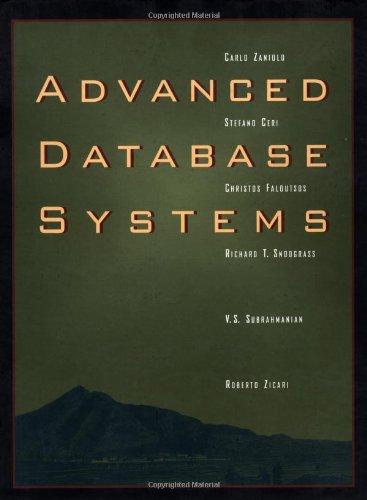Question
We define the Escape Problem as follows. We are given a directed graph G = (V, E) (picture a network of roads.) A certain collection
We define the Escape Problem as follows. We are given a directed graph G = (V, E) (picture a network of roads.) A certain collection of vertices X ? V are designated as populated vertices, and a certain other collection S ? V are designated as safe vertices. (Assume that X and S are disjoint.) In case of an emergency, we want evacuation routes from the populated vertices to the safe vertices. A set of evacuation routes is defined as a set of paths in G such that (i) each vertex in X is the tail of one path, (ii) the last vertex on each path lies in S, and (iii) the paths do not share any edges. Such a set of paths gives way for the occupants of the populated vertices to escape to S without overly congesting any edge in G.
(a) Given G, X, and S, show how to decide in polynomial time whether such a set of evacuation routes exists.
(b) Suppose we have exactly the same problem as in (a), but we want to enforce an even stronger version of the no congestion condition (iii). Thus we change (iii) to say, the paths do not share any vertices. With this new condition, show how to decide in polynomial time whether such a set of evacuation routes exists. Also provide an example with the same G, X, and S in which the answer is yes to the question in (a) but no to the question in (b).

Step by Step Solution
There are 3 Steps involved in it
Step: 1

Get Instant Access to Expert-Tailored Solutions
See step-by-step solutions with expert insights and AI powered tools for academic success
Step: 2

Step: 3

Ace Your Homework with AI
Get the answers you need in no time with our AI-driven, step-by-step assistance
Get Started


